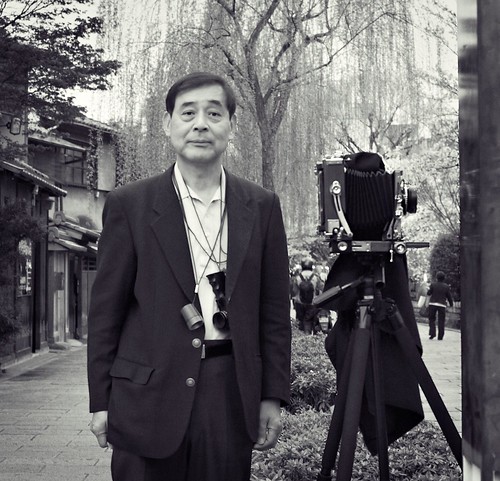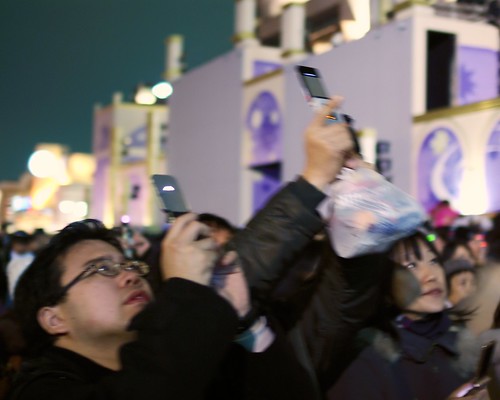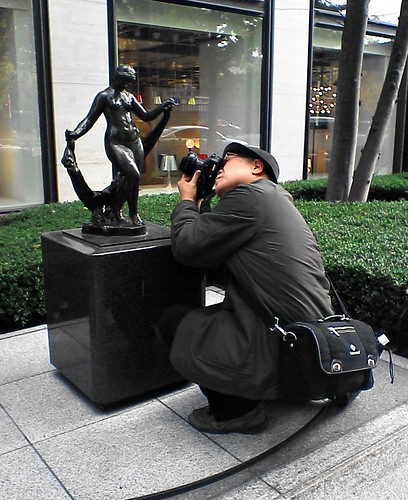First, film. Film is dead - as a mainstream consumer format, that is. Now, that does not mean that film will disappear; as a niche it looks to be thriving and long-lasting. The number of users are stabilizing, with film era holdouts being joined by amateurs and professionals picking up film again as a complementary medium to digital. I'm one of those recent users myself.
Holga, Diana, Seagull and other cheap-and-cheerful film cameras are making film a popular alternative among some young photographers. Leica, Fuji, Cosina, Mamiya, Hasselblad and Rollei are still producing film cameras. Fuji and Cosina is even jointly launching a new medium-format folding camera this spring (and for the record: yes, I want one very, very much; if any reader happens to have 200k yen cluttering up their apartment and making a mess, feel free to give me one of these instead of throwing the money in the trash).
But any business plan that depends on many hundreds of millions of people using film for their photography is sure to fail today. Fuji and Kodak both seem determined to keep their film and chemicals business going (they're reportedly profitable), but most other film-era companies have disappeared or left the field. More often than not their assets have been spun off or acquired by small companies able to thrive in a niche market where a large company can't. The film photographer has joined the portrait painter as a niche business, as an art medium and hobby.
Holga, Diana, Seagull and other cheap-and-cheerful film cameras are making film a popular alternative among some young photographers. Leica, Fuji, Cosina, Mamiya, Hasselblad and Rollei are still producing film cameras. Fuji and Cosina is even jointly launching a new medium-format folding camera this spring (and for the record: yes, I want one very, very much; if any reader happens to have 200k yen cluttering up their apartment and making a mess, feel free to give me one of these instead of throwing the money in the trash).
But any business plan that depends on many hundreds of millions of people using film for their photography is sure to fail today. Fuji and Kodak both seem determined to keep their film and chemicals business going (they're reportedly profitable), but most other film-era companies have disappeared or left the field. More often than not their assets have been spun off or acquired by small companies able to thrive in a niche market where a large company can't. The film photographer has joined the portrait painter as a niche business, as an art medium and hobby.
So, what about the camera itself? We went to Universal Studios Japan with a couple of relatives just before Christmas. The place was absolutely packed. Throngs of people from all over Japan and east Asia were mobbing the attractions and food vendors, watching the live shows and oogling the characters, Christmas decorations and fake street views. And people were constantly taking pictures, of everything and everybody. There were digital SLRs and even a few film users, but easily five or ten times more pocket digital cameras. However, all the cameras combined were completely outclassed by people simply using their cellphones, perhaps ten or twenty people for each one with a "real" camera. It's not just USJ; wherever you go here it's the same thing - "everybody" has a cellphone and only a minority bother with a separate camera.
Ah, the cellphone camera. A low resolution, noisy image with fine detail smeared out by heavy-handed noise reduction and white balance only vaguely related to reality. Fiddly handling, half a second or more focus lag - that is, unless the cam is fixed-focus - and another half a second to actually take the picture. The images are printed (if they are printed at all) in automatic kiosks giving you a strangely colored print the size of one of my medium format negatives.
None of that matters. You don't hear most users complain, and they don't complain because the results are good enough for their use - a memento, something to show your friends and relatives, a memory aid. The motive is everything; image quality and composition is secondary or completely unimportant. To be fair, image quality has increased quite a lot lately. A good cellphone camera in even, natural light will give you a perfectly fine picture. And that increasingly means that a free camera in your cellphone will trump even the best designed, inexpensive pocket camera in the market.
It's not easy to find freely available, directly comparable statistics over time, but here's what I could get hold of after literally minutes of googling (what don't I do for my readers). Most of these sources aren't directly comparable; it's the general trends that are interesting, not the numbers.
- In 2004, 257 million camera phones were sold, already outselling digital cameras 4 to 1 (source)
- In 2007, around 700 million camera phones were sold (source), while digital cameras reached 101 million (source), for about a 7 to 1 difference.
- Sales of digital SLR cameras have consistently been increasing faster than the lower-end fixed lens cameras, and the trend is continuing. The CIPA forecast for next year is flat, but with DSLR sales to increase by 6.8%, and fixed-lens cameras to decrease by 1.3% (PDF source)
In other words, camera phones have been outselling "real" cameras for at least five years, have been growing faster and now completely dominates the market for devices capable of taking pictures. There is also a sustained trend for higher-end DSLRs to increase faster than lower-end cameras, a possible indication that camera phones are eating into the market for low-end cameras. It would be interesting to see the figures for low-end and high-end fixed-lens cameras tabulated separately.
The standalone camera is itself becoming a niche market, something for the enthusiast or gearhead. The very idea of buying yourself a camera is becoming unusual. The camera, as the dominant image taking device, is dying.
It's becoming rare to see people bring a "real" camera and a bag of gear just to take pictures. For most people the ever-present phone cam is already good enough.
This picture, by the way, was taken with my old cellphone; that one would be more than three years old now. My current one gives me higher quality, and models selling today do better still.
As with film, of course, but even more so, it doesn't mean the camera as an object will disappear or anything. We're still talking about 100 million cameras made every year after all. The numbers will dip a bit over the next couple of years, but there's a huge amount of cameras being sold out there. Nor do I think the market shift will be as fast as the shift from film to digital. The decline of the low-end mass-market camera will be gradual.
I do believe that the low-end digital camera market will eventually disappear, while the high-end pocket camera and DSLR continues to thrive, selling to those who take an interest in photography itself. That means that any business aiming for the photographic mass market - cheap printing, image sharing, accessories and so on - will consider cellphone users first and foremost, not camera owners. It means the standard of amateur imaging and man-on-the-spot pictures of significant events will be - and perhaps already is - the cellphone camera.




wow, interesting statistics.
ReplyDeleteIt's only really in the past year that I noticed the predominance of cell phone cameras. So many people clicking away on those crumby little phones, all the time, everywhere!
What do they do with the photos? do they really print them out?
Like he said in the article, they are mostly for mementos, but in the news, a cellphone video or picture of the event, beats a High Def of the aftermath!
ReplyDelete